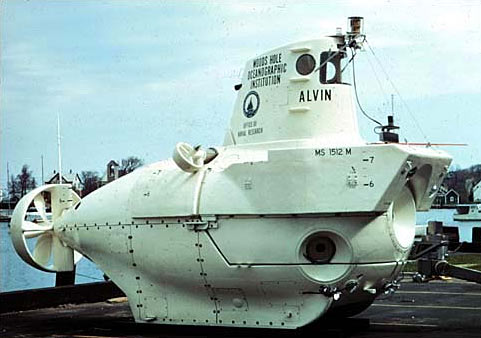Stefan Helmreich: An Anthropologist Underwater: Immersive Soundscapes, Submarine Cyborgs, and Transductive Ethnography (2007)
Filed under paper | Tags: · anthropology, anthropology of sound, cybernetics, cyborg, ethnography, hearing, immersion, listening, media, noise, science, sound, sound studies, transduction, water

“In this article, I deliver a first-person anthropological report on a dive to the seafloor in the Woods Hole Oceanographic Institution’s three-person submersible, Alvin. I examine multiple meanings of immersion: as a descent into liquid, an absorption in activity, and the all-encompassing entry of an anthropologist into a cultural medium. Tuning in to the rhythms of what I call the “submarine cyborg”—“doing anthropology in sound,” as advocated by Steven Feld and Donald Brenneis (2004)—I show how interior and exterior soundscapes create a sense of immersion, and I argue that a transductive ethnography can make explicit the technical structures and social practices of sounding, hearing, and listening that support this sense of sonic presence.” (Abstract)
Published in American Ethnologist 34(4), 2007, pp 621-641.
PDF (from the author, updated on 2016-8-25)
Comment (0)Jack Ox, Jeremy Hight, Erik Champion (eds.): LEA Special Issue: Creative Data (2009)
Filed under journal | Tags: · data visualisation, immersion, mapping
The Creative Data special issue features papers and artworks that deal with the emerging practice of data visualization as an immersive experience. Data has long been the property and domain of screen-based collection, archiving, processing and interaction. The emergence of new processes, functionality and ways of interacting with information is opening up several new areas of great possibility in which the data allows newfound thematic and engaging forms of immersion, as well as innovative and perception-reshaping interaction. Consider a simple analogy; to swim in a pool is to understand three-dimensionality, interaction, spatial relationships and a macro-micro view, as well as contextual and embodied interaction. Can we swim with data? How do we build, debate and discuss the future and shape of immersivity in its relation to data? Can the representation of data as an immersive environment be considered a creative accomplishment or support creativity in action or as spectacle? How does this change the way we collect and archive information? How does it relate to our ways of interacting with information in study and analysis? How can this enhance or fuse key aspects of image projection, virtual reality, augmented reality, new media and even locative media?
The essays, interviews, reports and other forms of writing look at spatialization and layering of information, a greater sense of immersion, new forms of visualization and depth of field, precedents, future applications and connotations, our relationship to immersion and information inherently as how this applies to this new area.
Guest Editors: Jack Ox, Jeremy Hight, and Erik Champion
Leonardo Electronic Almanac
Vol 16 Issue 6 – 7
More info and download (PDF per article)
Comment (0)Marie-Laure Ryan: Narrative as Virtual Reality: Immersion and Interactivity in Literature and Electronic Media (2001)
Filed under book | Tags: · computer games, fiction, hypertext, immersion, installation art, interactivity, literature, narrative, phenomenology, postmodern, reading, textuality, virtual reality

Is there a significant difference in attitude between immersion in a game and immersion in a movie or novel? What are the new possibilities for representation offered by the emerging technology of virtual reality? As Marie—Laure Ryan demonstrates in Narrative as Virtual Reality, the questions raised by new, interactive technologies have their precursors and echoes in pre—electronic literary and artistic traditions. Formerly a culture of immersive ideals — getting lost in a good book, for example — we are becoming, Ryan claims, a culture more concerned with interactivity. Approaching the idea of virtual reality as a metaphor for total art, Narrative as Virtual Reality applies the concepts of immersion and interactivity to develop a phenomenology of reading.
Ryan’s analysis encompasses both traditional literary narratives and the new textual genres made possible by the electronic revolution of the past few years, such as hypertext, interactive movies and drama, digital installation art, and computer role—playing games. Interspersed among the book’s chapters are several “interludes” that focus exclusively on either key literary texts that foreshadow what we now call “virtual reality,” including those of Baudelaire, Huysmans, Ignatius de Loyola, Calvino, and science—fiction author Neal Stephenson, or recent efforts to produce interactive art forms, like the hypertext “novel” Twelve Blue, by Michael Joyce, and I’m Your Man, an interactive movie. As Ryan considers the fate of traditional narrative patterns in digital culture, she revisits one of the central issues in modern literary theory — the opposition between a presumably passive reading that is taken over by the world a text represents and an active, deconstructive reading that imaginatively participates in the text’s creation.
Publisher Johns Hopkins University Press, 2001
ISBN 0801864879, 9780801864872
399 pages
PDF (updated on 2013-6-28, some images missing)
Comment (0)
